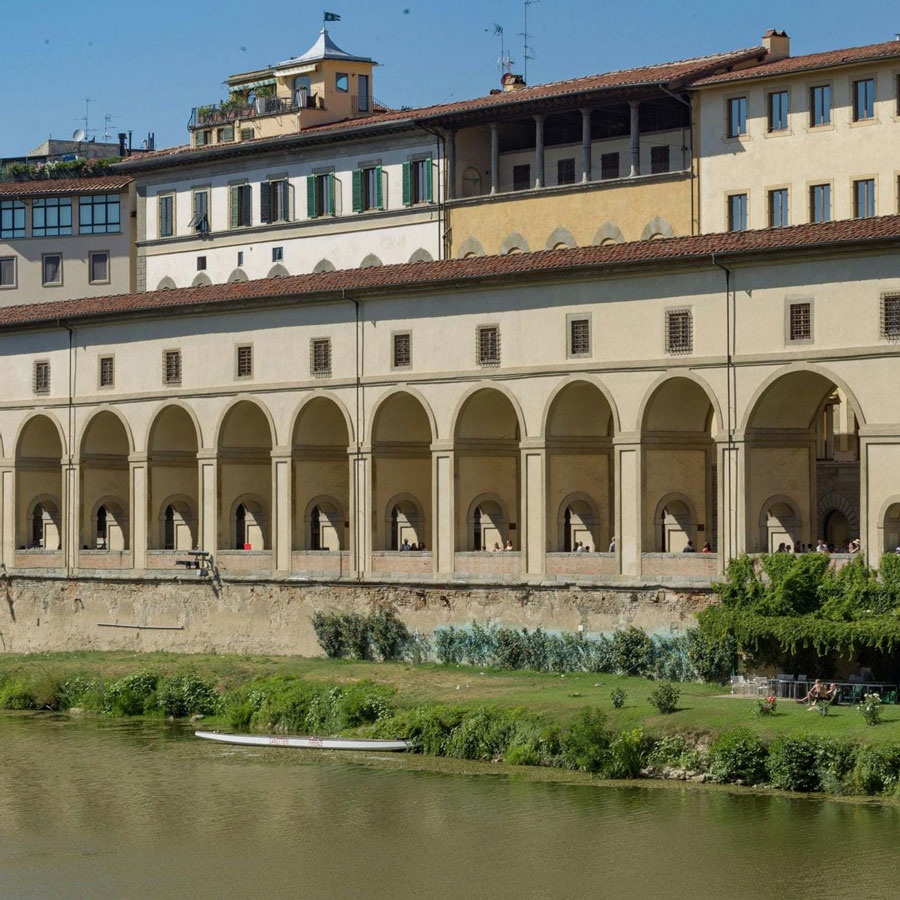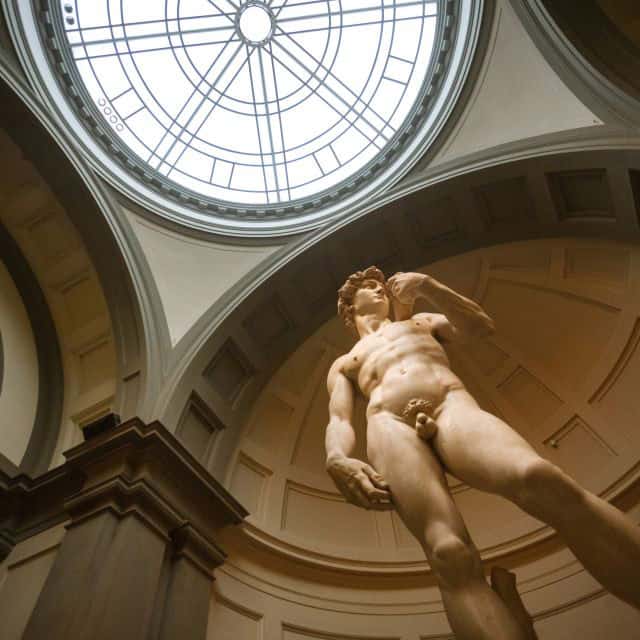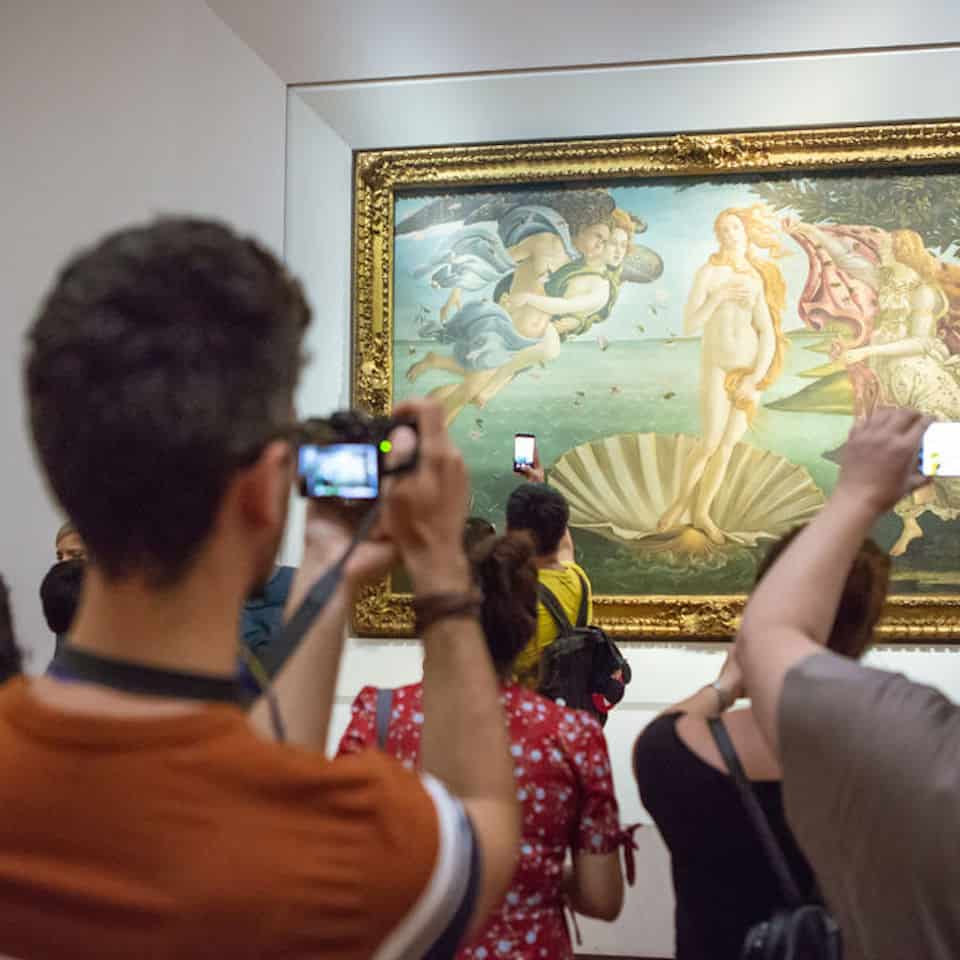Florence’s Vasari corridor has re-opened to the public, after an eight-year restoration.
At long last, the Vasari Corridor, the 16th century private passageway of the Medici family, will allow visitors to follow the footsteps of Florence’s most famous family on a walk from the Uffizi Gallery, over the streets of Florence and Ponte Vecchio Bridge to the Boboli Gardens in the Oltrarno.
The walk begins on the first floor of the Uffizi Gallery. Gone are the portraits that historically hung in the corridor (now located in the Uffizi)–now visitors walk past simple white walls punctuated by windows overlooking the city with views of the Uffizi Gallery, over the Arno river and Ponte Vecchio bridge.
As you approach the Oltrarno side of the river, the corridor narrows to go around a medieval tower house before offering a view over Piazza Santa Felicita and then the Medici’s private viewing terrace inside the church of Santa Felicita, where they could attend mass from above without ever descending from their perch above the heads of regular Florentines.
From here the corridor proceeds to the exit in the Boboli gardens next to the Grotto of Buontalenti. The custodians will bring you into the courtyard of Palazzo Pitti where the walk concludes. From here you have the option to enter the Boboli Gardens or Pitti Palace (separate entrance ticket required) or head out into the Oltrarno neighborhood.
INSPIRATION
10 Must Sees in Florence’s Uffizi Gallery


The Vasari Corridor and the Medici
Cosimo I De Medici, duke of Florence, had his friend and architect Giorgio Vasari construct the corridor in 1565 to connect two Medici residences in Florence: the Palazzo Signoria, known later as the Palazzo Vecchio, and the Pitti Palace (purchased by the duke’s wife Eleanora).
While the corridor took only five months to build, the death of a number of workers in the process attests to the extraordinary speed of its construction while Vasari was also working on the construction of the Uffizi, as a new office building for the guild headquarters.
Notoriously, the corridor passed straight through the medieval town houses of many wealthy Florentine families who were forced to let the Medici passageway cut through rooms of their family homes. Only the Mannelli tower on the Oltrarno side of Ponte Vecchio was spared and the corridor itself narrowed to go around it. It’s a mystery to this day exactly what favors were exchanged to allow such a concession.
Thus, to avoid a walk or carriage ride through the streets (not just dirty but dangerous to the controversial new dukes), the corridor allowed the Medici to stay just where they liked–well above everyone else.

The Corridor and the Ponte Vecchio Gold Market
As the tale has it, the offensive smell of the fish and butcher shops on Ponte Vecchio displeased the Medici, so Cosimo relocated these shops elsewhere and moved the gold market onto Ponte Vecchio instead.
To this day, nearly 500 years later, Florence’s iconic bridge is home to renowned gold shops. Who wouldn’t want to walk across a road paved with gold?

The Corridor and WWII
On May 9, 1938 Benito Mussolini, leader of Italy and founder of the fascist party, met Adolf Hitler in Florence to lead a grand parade through the city which included a visit to the Uffizi Gallery and a walk through the Vasari Corridor when the three large windows on Ponte Vecchio were opened for the occasion.
In August of 1944, the Nazi’s were in control of Florence decided that all the bridges over the Arno river should be destroyed to impede the progress of the Allied army advancing from the south. Thanks to the work of the German console Gerhard Wolf and his Swiss colleague Steinhauslin, the Ponte Vecchio and thus the Vasari corridor were saved from destruction–the only bridge in the city to survive.


Planning Your Visit
Tickets can be purchased on the official website. Only five tickets can be purchased by any one customer and there is a limit of 25 people total permitted inside every 30 minutes.
A custodian will take your group through the corridor, allowing ample time to stop, take pictures, and admire the view. No videos are allowed.
The walk begins in the Uffizi Gallery and ends next to the Grotto of Buontalenti in the Boboli Gardens behind Pitti Palace in the Oltrarno. You are not permitted to go back down the corridor to the Uffizi and you are not permitted to enter the Uffizi gallery a second time. The ticket does not allow you to enter the Boboli Gardens or Pitti Palace so if you wish to do so, consider purchasing those tickets in advance.
The starting point for the Corridor is located inside the Uffizi gallery and it’s not easy to find so leave yourself plenty of time to get there.
Museum entry is allowed up to 2 hours before your corridor entrance time. You will have to pass through security on the ground floor and then you will have some time to visit to the top floor (2nd floor) of the Uffizi Gallery. Then you must descend to the middle floor (1st floor) to find the entrance to the corridor. Access will not be permitted to those arriving late.
Piazzale degli Uffizi, 6














